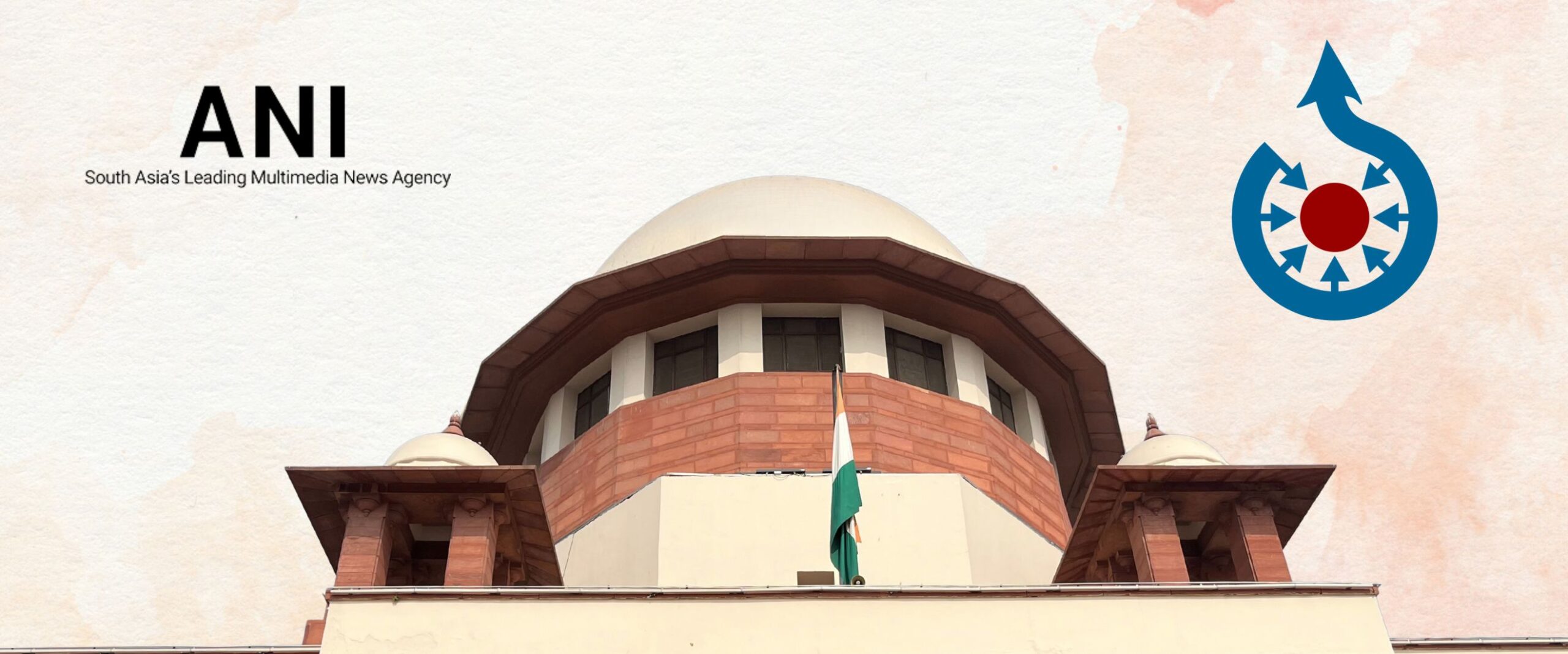Analysis
What the ANI v Wikimedia case tells us about ‘open justice’
By reversing the Delhi HC’s order to take down a page reporting court proceedings, the SC upheld the public’s right to access information

On 9 May 2025, a Bench of Justices A.S. Oka and Ujjal Bhuyan set aside a Delhi High Court order directing Wikimedia to take down information about a defamation suit filed by media organisation Asian News International (ANI) against Wikimedia. The ₹2 crore civil defamation lawsuit alleged that Wikimedia hosted “misleading, negative, and defamatory” information about ANI on a Wikipedia page.
ANI is no stranger to legal battles. In 2024 alone, the network litigated against The Press Trust of India, Netflix, and OpenAI. Most recently, it made headlines for its defamation suit against YouTuber Mohak Mangal after he published a video criticising ANI’s business niche in copyright claims against YouTubers.
When ANI took Wikimedia to Court
ANI had initially taken exception to a text which accused the network of being a “propaganda tool for the incumbent central government, distributing materials from a vast network of fake news websites, and misreporting events on multiple occasions.”
On 20 August 2024, Justice Navin Chawla of the Delhi High Court directed Wikimedia to disclose the details of the user who wrote or edited ANI’s Wikipedia page. The Court reprimanded Wikimedia by stating, “if you don’t like India, don’t work in India.” The Order was widely reported in media outlets. A new page reporting the proceedings and issues at stake came up on the Wikipedia website. It was titled ‘Asian News International vs. Wikimedia Foundation.
A Division Bench of the Delhi High Court heard Wikimedia’s appeal against the decision. As part of the proceedings, the Bench directed Wikimedia to take down the new page within 36 hours, stating that it interfered with a sub-judice case and bordered on contempt. Wikimedia complied with the order, making it the first time that an English-language Wikipedia article was taken down due to a court order.
Wikimedia then approached the Supreme Court challenging the High Court’s takedown order.
Supreme Court: Takedown order was “disproportionate”
While reversing the High Court’s takedown order, the Supreme Court relied on the principle of ‘open justice’ to reiterate that sub-judice matters can be debated by the public and the press. ‘Open justice’ mandates that factual information about Court proceedings, even in existing matters, be public, accessible and open to scrutiny.
In this context, the Court relied on precedents which addressed the friction between media publications and judicial proceedings. In Naresh Shridhar Mirajkar v State of Maharashtra (1966), the Court observed that open courts create public confidence in the fairness, objectivity and impartiality of the administration of justice. In Reliance Petrochemicals Limited v Proprietors of Indian Express Newspapers (1988), the Court held that any preventive injunction against the press can only be granted if there is a “present and imminent danger” of impairing the administration of justice.
A Constitution Bench in Sahara India Real Estate Corporation v Securities and Exchange Board of India (2012) reaffirmed that there needs to be a “real and substantial risk of prejudice” to a fair trial to establish a sub-judice violation. The Bench observed: “[The] Supreme Court is not only the sentinel of the fundamental rights but is also a balancing wheel between the rights, subject to social control.”
‘Open justice’ was spotlighted by the Court in Swapnil Tripathi v Supreme Court of India (2018), where it held that cases of constitutional significance and national importance should be broadcast to the public. It observed that the principle was rooted in the right to access justice (Article 21) and the right to know (Article 19(1)(a)). Further, Justice A.M. Khanwilkar, who authored the opinion in Swapnil Tripathi, reiterated that open courts are a safeguard against judicial arbitrariness.
Relying on these verdicts, the Court underscored that open justice is not only a principle of access, but a safeguard against judicial vagaries or overbroad censorship. It ruled that the Delhi High Court had “reacted disproportionately” by passing a takedown order and ordered that the Wikipedia page be restored. In his opinion, Justice Bhuyan wrote: “Both the judiciary and the media are the foundational pillars of democracy which is a basic feature of our Constitution. For a liberal democracy to thrive, both must supplement each other.”
‘Open justice’ and the limits of interim censorship
The pattern of Supreme Court judgements on prior restraints against the press demonstrates an incremental tightening of the threshold for interim censorship. In the Delhi High Court proceedings, the Bench acknowledged the relevance of the Supreme Court’s Order in Bloomberg v Zee Entertainment (2024).
That Order warned against pre-trial injunctions that suppress material before judicial determination of its falsity. It acknowledged Strategic Lawsuits Against Public Participation (SLAPP) as a growing concern across jurisdictions, where litigation is initiated by “entities that wield immense economic power” to “prevent the public from knowing about or participating in important affairs in the public interest.” It noted that such pre-trial interim injunctions often act as a “death sentence” to material sought to be published, well before any allegations have been proved.
Meanwhile, the defamation proceedings before the Delhi High Court remain ongoing. The ANI dispute illustrates how allegations of defamation and contempt can converge to restrict critical expression and undermine press freedom. As strategic litigation is increasingly leveraged to constrain reporting, the principle of open justice remains vital in persevering the sphere of legitimate public scrutiny.